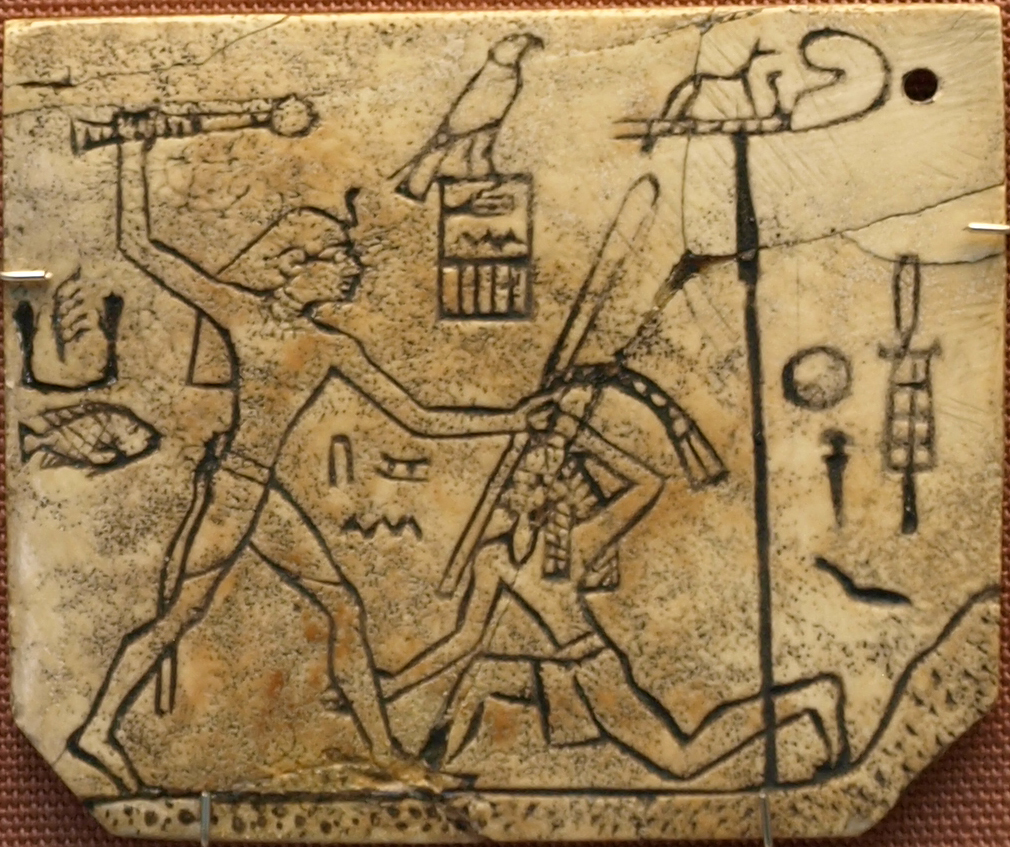Den (Hor Den “Horus who strikes”) ruled ancient Egypt during the Early Dynastic Period. He was probably the fourth king of the first dynasty, but may have been the fifth ruler, as some scholars consider that his mother Queen Mereneith ruled ancient Egypt before him.

His reign is attested on numerous fragments and inscriptions on vases and the Palermo Stone implies that he ruled for around thirty-two years (although he is not specifically named, occurrences in his reign echo the detail in this record). His throne name (Semti) may relate to the king’s name Hesspti on the Abydos Kings List. As far as we are aware, he was the first to wear the double crowns of Upper and Lower Egypt and to use the title King of the Two Lands. His tomb at Abydos also contains the first known example of the use of red granite in monumental building.


Early Egyptian sources record that he fought the Bedouin tribes in Sinai and a label from Abydos shows “the first smiting of the east” (probably referring to the “smiting of the troglodytes” as recorded on the Palermo Stone). Another label recovered from Abydos shows Den smiting an Asiatic captive. His name appears in a serekh topped by a representation of Horus, but in front of him there is a standard bearing a Seth animal.

We also have a lovely ebony label depicting his Heb Sed (jubilee) festival which was attached to a jar of oil found in his tomb in Abydos. Den is depicted sitting on a dias wearing the double crown, and also running around the sacred enclosure. His name appears in a serekh on the left hand side, along with what appears to be a record of preparations and offerings.
Pharaoh’s Names
Manetho; Usaphaidos

Nomen; Septi (from the Abydos kings list)

Nomen; Semti

Nomen; Semti or Kenti (from the Turin list)

Nebti; Smyti (or Xasti) “Man of the desert”
Copyright J Hill 2010